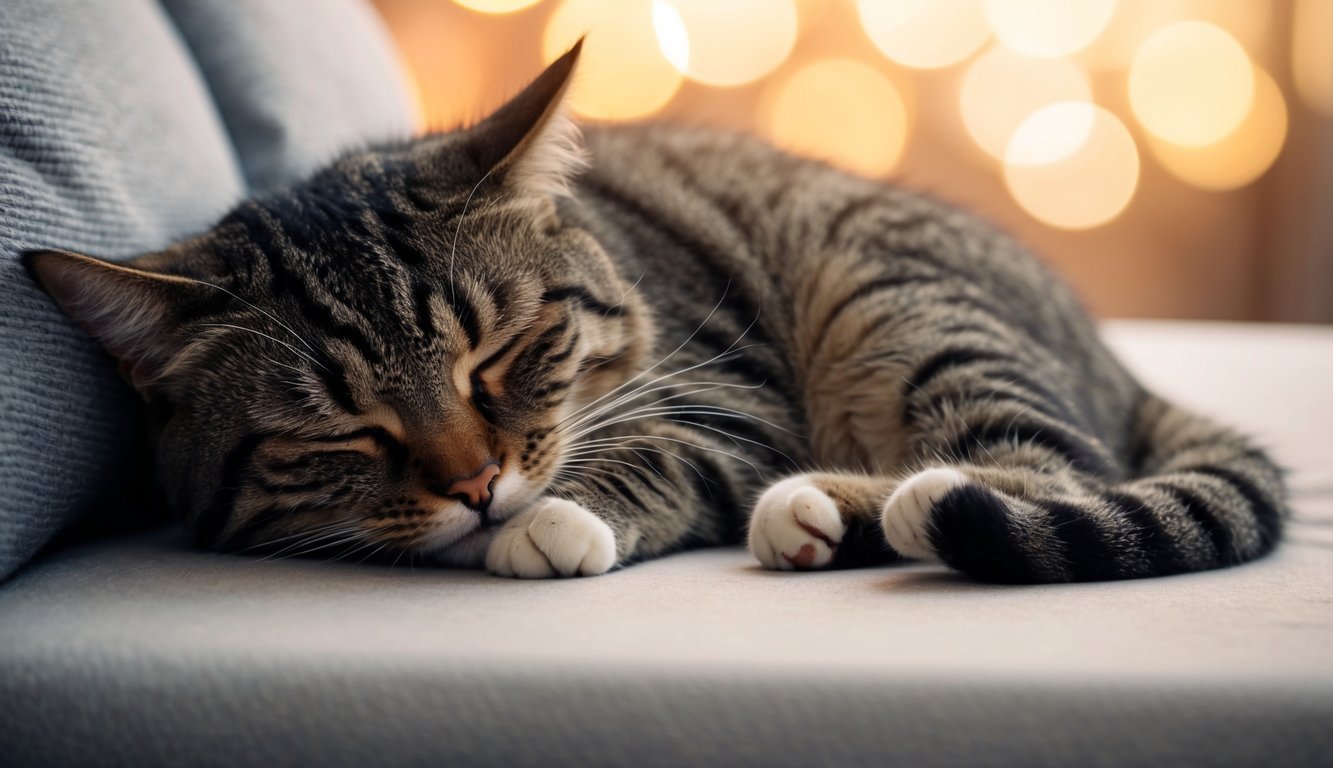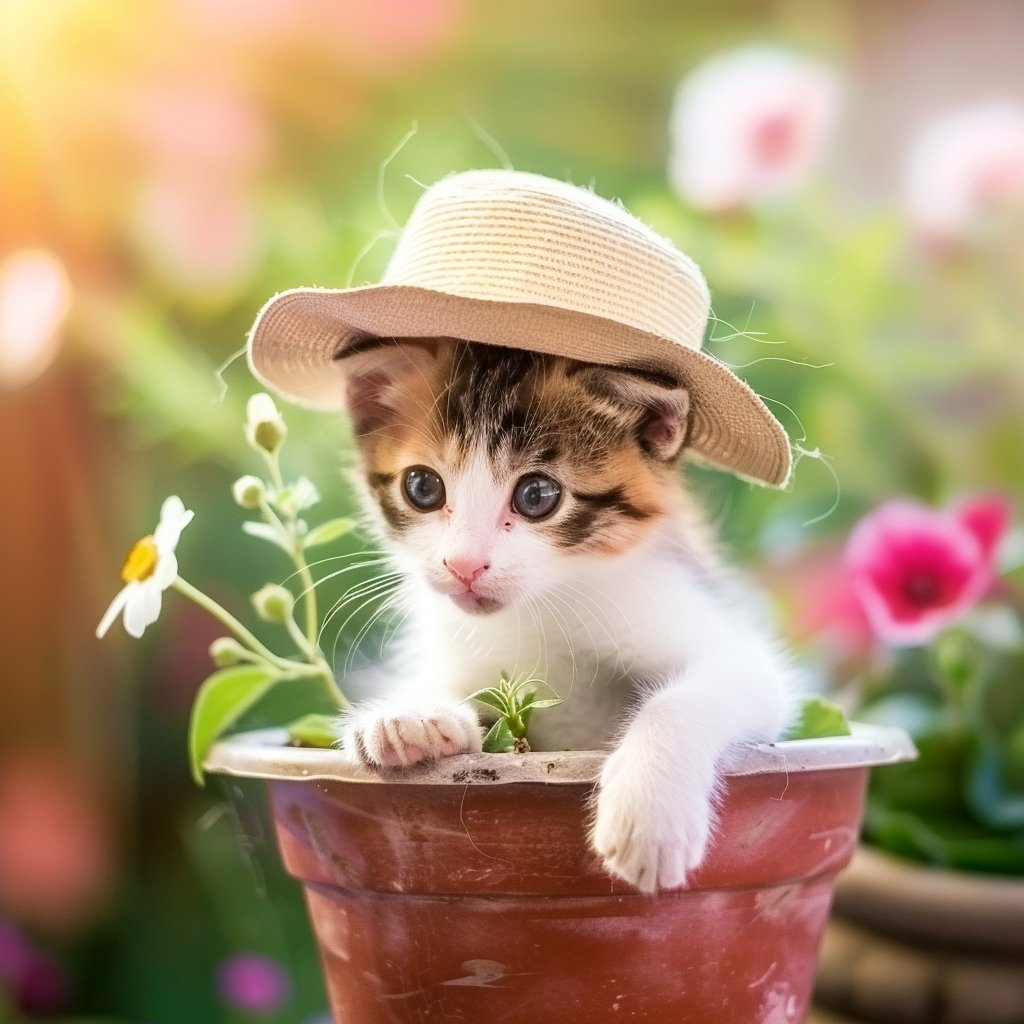Ever notice your furry friend’s whiskers twitching or paws moving while they snooze? It’s totally normal! Cats spend up to 18 hours a day sleeping, so it’s no surprise you might catch them in the middle of a dream.
Most cat twitching during sleep is harmless and just a sign your kitty is in dreamland.
Your cat’s sleep cycle includes periods of rapid eye movement (REM) sleep, just like humans.
During REM sleep, your cat’s brain is active and they may twitch, move their paws, or even make little noises.
It’s like they’re chasing mice or climbing trees in their dreams!
While sleep twitching is usually nothing to worry about, keep an eye out for any unusual or excessive movements.
If you notice your cat twitching a lot when awake or having violent spasms during sleep, it’s best to check with your vet.
Most of the time though, those cute little twitches are just your cat living out their wildest dreams during a cozy catnap.
Exploring Feline Sleep Patterns
Cats sleep a lot, but their sleep isn’t all the same.
They have different stages of sleep, including light sleep and deep sleep.
Cats also dream during their sleep, just like you do.
REM Sleep and Dreaming in Cats
REM sleep is when cats dream.
During this stage, you might see your cat’s paws twitching or their whiskers moving.
This is called activated sleep.
It’s normal and shows your cat is having vivid dreams.
Cats spend about 25% of their sleep time in REM.
That’s more than humans do.
You might wonder what cats dream about.
While we can’t know for sure, experts think they probably dream about things they do when awake, like chasing mice or playing with toys.
The Various Stages of Cat Sleep
Cats go through several sleep stages, just like you do.
They start with light sleep, where they can wake up easily.
This is why cats often seem to be napping with one eye open.
Next comes deep sleep.
This is when your cat’s body repairs itself and grows.
Cats spend about 15-20% of their sleep time in deep sleep.
Finally, there’s REM sleep.
Cats cycle through these stages quickly, which is why they can go from sound asleep to wide awake in seconds.
This sleep pattern helps cats stay alert and ready to react to danger, even when resting.
Causes of Sleep Twitching in Cats
Cats may twitch in their sleep for several reasons.
Some twitching is normal, while other types can point to health issues.
Let’s look at the main causes of cat sleep twitching.
Normal Twitching vs. Seizures
When your cat twitches during sleep, it’s often just dreaming.
This happens during REM sleep, when cats may move their paws or make small noises.
It’s similar to how people sometimes move in their sleep.
But seizures are different.
They’re more intense and don’t stop if you wake your cat.
If you’re worried, try gently calling your cat’s name.
If they wake up easily, it was likely just normal twitching.
Seizures in cats can be scary.
They involve violent shaking and loss of awareness.
If you think your cat is having seizures, even during sleep, it’s best to see a vet right away.
Understanding Feline Hyperesthesia Syndrome
Feline hyperesthesia syndrome (FHS) can cause twitching, but it’s not just a sleep issue.
Cats with FHS might twitch or act oddly when awake too.
Signs of FHS include:
- Skin rippling along the back
- Sudden bursts of activity
- Biting at their tail or body
These episodes can happen anytime, not just during sleep.
FHS can be tricky to spot because it looks like normal cat behavior at first.
But if you notice your cat doing these things often, it’s worth talking to your vet.
Common Parasites and Their Impact
Fleas and other tiny pests can make your cat twitch, even while sleeping.
These little bugs irritate your cat’s skin, causing itching and discomfort.
Ear mites are another culprit.
They live in your cat’s ears and can make them shake their head or twitch their ears.
You might notice your cat scratching at their ears more than usual.
To check for fleas:
- Look for tiny dark specks in your cat’s fur
- Use a flea comb to catch any hiding fleas
For ear mites, look for dark, crumbly stuff in your cat’s ears.
If you spot signs of either, your vet can help you get rid of these pests and stop the twitching.
Decoding Cat Twitches and Behaviors

Cat twitches during sleep can tell you a lot about their state of mind and health.
These movements often happen naturally, but sometimes they may point to other issues.
Reading the Signs of Involuntary Movements
When your cat sleeps, you might see their paws move or their whiskers twitch.
This is normal and usually happens during REM sleep.
It’s like when you dream and your body reacts.
Some common signs include:
- Quick paw movements
- Tail flicking
- Ear twitches
- Whisker wiggles
These twitches are often short and stop when your cat wakes up.
If you see longer or stronger movements, it might be time to call the vet.
Potential Behavioral Triggers
Your cat’s day-to-day life can affect their twitches.
What they eat and how they feel can change how they sleep.
Things that might cause more twitching:
- Stress from changes at home
- New foods in their diet
- Not enough playtime
- Too much noise when sleeping
Older cats may twitch more as they age.
This is normal, but keep an eye out for any big changes.
A comfy bed and quiet spot can help your cat sleep better with fewer twitches.

